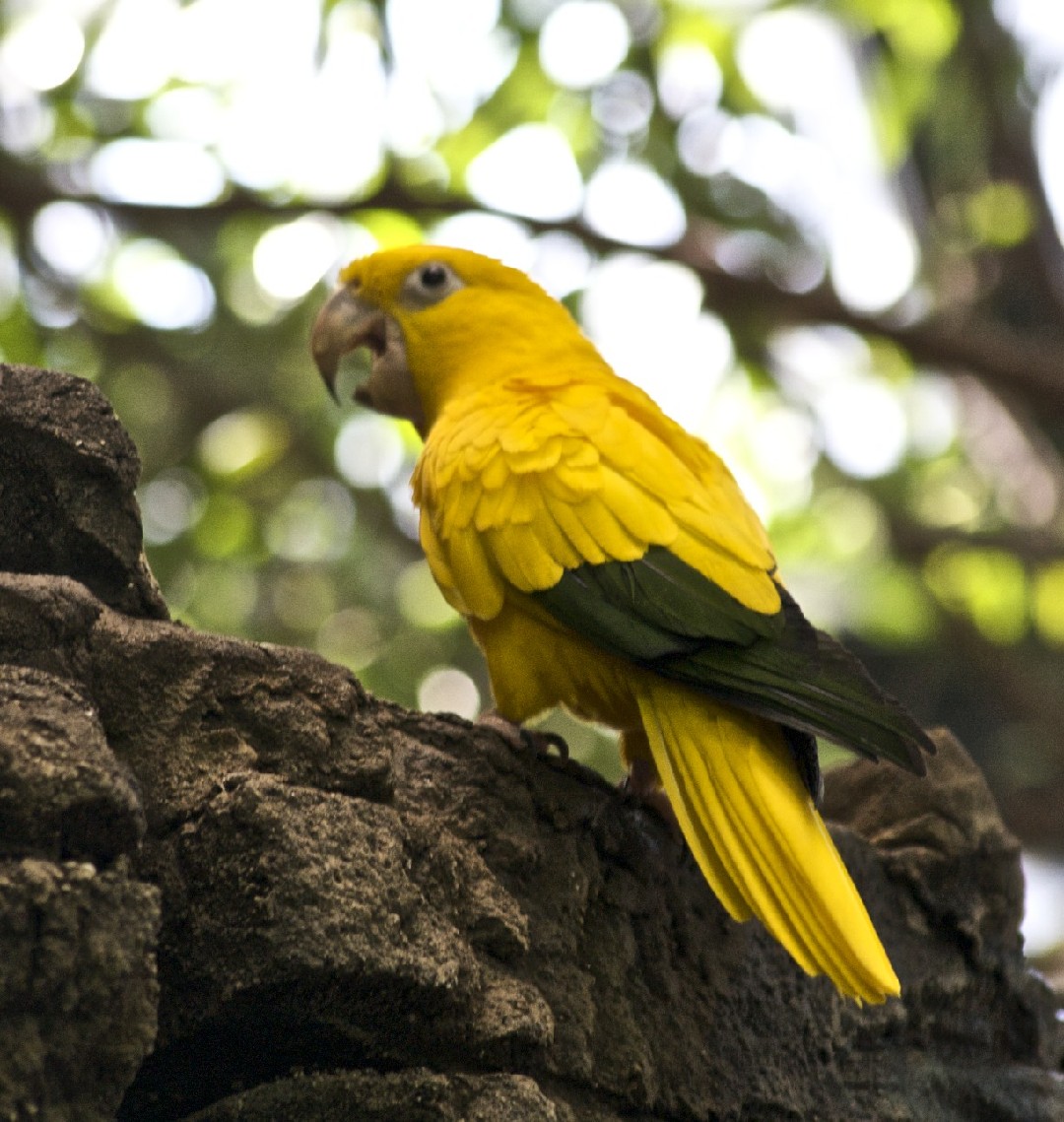Golden Parakeet
A species of Golden Parakeet Scientific name : Guaruba guarouba Genus : Golden Parakeet
Golden Parakeet, A species of Golden Parakeet
Botanical name: Guaruba guarouba
Genus: Golden Parakeet
Content
Description General Info
Description
The golden Parakeet is a vibrant and eye-catching bird, with stunning golden-yellow feathers and striking green wings. This species is native to South America and inhabits the forests of the Amazon Basin. It feeds on a variety of fruits, seeds, and nuts, and is known for its noisy and social behavior. The parakeet is also capable of mimicking human speech and is a popular pet. 
Size
36 cm
Life Expectancy
10-40 years
Nest Placement
Cavity
Feeding Habits
Golden Parakeet consumes a varied diet including whole fruits, seeds, pulp, buds, flowers, nectar, and peels, often foraging on cultivated plants. Golden Parakeet has specialized feeding behaviors adapted to its diverse diet.
Habitat
Golden Parakeet predominantly reside in primary terra firme forests situated in undulating terrains within the Amazon basin's lowlands. They are also found in secondary and igapó forests, particularly for feeding. These birds tend to select disturbed areas with dead trees adjacent to large forest patches for nesting and roosting, favoring isolated trees as a strategic defense against predators. Characteristically, golden Parakeet shun regions with high humidity in central Amazon and areas with cooler southern temperatures.
Dite type
Frugivorous
General Info
Feeding Habits
Bird food type

Fruit
Behavior
Golden parakeets are a social species, living, feeding, sleeping, and even breeding together. In the wild, they have a varied diet, feeding on fruits such as mango, muruci and açai, flowers, buds, seeds (including Croton matouensis, and crop plants, particularly maize. 
Distribution Area
Its range is estimated to be limited to about 174,000 km. between the Tocantins, lower Xingu, and Tapajós Rivers in the Amazon Basin south of the Amazon River in the state of Pará, northern Brazil. Additional records occur from adjacent northern Maranhão. The birds in a 1986 study used two different habitats during the year; during the nonbreeding season, which coincided with the dry season, they occupied the tall forest. During the breeding season, they left the tall forest and entered open areas on the edge of the forest such as fields used in agriculture. 
Species Status
The golden parakeet is listed on the IUCN Red List as vulnerable. This is largely due to deforestation and the capture of wild birds for aviculture, where it is in high demand due to the attractiveness of its plumage. Locally, they are considered as pests for feeding on crops, and are hunted for food or sport. The current population is estimated to be in the range of 10,000 to 20,000. An example of the displacement of golden parakeets by habitat loss comes from the building of the Tucuruí Dam, Pará, from 1975–1984. More than 35,000 forest dwellers were forced from what had been a habitat that was considered to be "among the richest and most diversified in the world." In addition, 2,875 km (1,110 sq mi) of rainforest were flooded, and 1,600 islands were produced by the flooding, all of which were heavily deforested. An international effort led by the Brazilian government in partnership with Parrots International, Lymington Foundation, the University of São Paulo and others is underway to raise young birds in captivity reintegrate them to their natural habitat with support of locals in Northeast Brazil. 
Scientific Classification
Phylum
Chordates Class
Birds Order
Parrots Family
Parrots Genus
Golden Parakeet Species
Golden Parakeet 